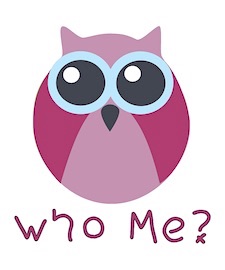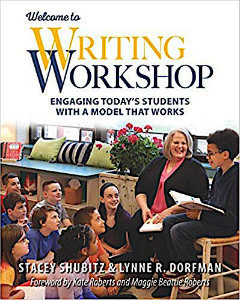Getting to Know Kids in Virtual/Hybrid Settings
Lynne Dorfman is the author of numerous literacy books based on workshop principles. Other timely MiddleWeb articles by Lynne include Book-in-a-Bag Talks Let Kids Shine Online and Staging ‘Story in a Bag’ in Your Room or Online.
By Lynne R. Dorfman
At the beginning of a new school year, establishing a strong class culture is our first priority, whether we are face-to-face or virtual. We can’t assume this culture exists, even if many of the students have been classmates before. Here are some ideas.
Pictures from home. A great way to introduce students to you and to each other is with photographs. If possible ask students to send you a photo with a sentence or two about what they love to do in school and at home. You could create a slide deck in Google Slides with a space for your students to upload images of themselves, their pets, and things they enjoy doing or making. You might be surprised at how much faster you learn all their names!
Visual Class Roll. A headshot collection of class members with their names might include speech bubble hashtags of their choosing. #EmbraceChange #CreatetheFuture #SavethePlanet #ProudtoBea6thGrader. You could offer examples or ask them to create unique hashtags (perhaps submit their top two choices in an email). The collection can serve as a teacher’s personal reference grid when you are delivering a minilesson or having a conversation with your students during online learning with real-time interaction. Using names in group discussions is a culture builder.
Virtual icebreakers. Team-building exercises can be used in virtual learning spaces to help your students connect, get to know one another, and improve communication. The synchronous bonding can improve morale and help members of the virtual class feel more comfortable learning and growing together.
Virtual team building is a great way to start a class and ease into what could be a lecture, an independent writing session, or a study session. Use a game like ‘Two Truths and a Lie’ (see below) or have each student talk for a minute on a favorite topic they enjoy.
Or randomly assign small groups to breakout rooms for three minutes at the beginning of class and give each group a puzzle, riddle, or brain-teaser to solve. (They’re easy to find on the internet. Questions could be content-specific or something like A man pushes his car to a hotel and tells the owner he’s bankrupt. Why?) Back in whole group, a spokesperson chosen randomly, by the group, or by you, can share the question and their best answer. (He’s playing Monopoly.)
Two Truths and a Lie. This is one of my favorite introductory or warm-up activities. It’s fun, uses creative thinking, involves everybody, shares some personal interest, and will grab kids’ attention online or in the physical classroom. Each student writes down three statements about themselves, where two statements are true and one is a lie. You can model with your own truths and a lie.
Make sure to tell the students that their lie must be believable, but it can be fairly remarkable or unusual. For example, stating that “I traveled to Mars on a spaceship my father built” is going to be an obvious lie. But perhaps, “I put ketchup on everything, even chocolate cake” is true, even if it sounds revolting!
This can be live (perhaps using a polling tool) but it also works well as an asynchronous activity. Students can send their statements via whatever chat board/tool the team is using, and the rest of the team can “like” or react to the statement they think is a lie. Once everyone has voted, the correct answers are displayed, and the chat will be opened to any follow-up questions or discussions.
The Who Me? Profile. One of my favorite icebreakers to use in face-to-face learning settings can also be used in a virtual setting. Students can complete their profile during asynchronous learning time. I usually ask students to complete as many items as possible, using words, phrases, sentences, and/or sketches.
When we come together on Zoom, Google Classroom, or another virtual format, we share three to five of our responses in small group settings or with an assigned partner or two in the chat. Students save one response to share in whole group. Or paired students can choose one interesting tidbit learned about a partner to share in whole group. Profiles can be saved and posted.
Be sure to model with your own profile first. Here are some of my responses:
My Who Me? Profile
Name: Lynne Dorfman
Home: Originally, Philadelphia.
Family:
Hobbies/Free Time: I love to garden, read mysteries and realistic fiction, write poems and short stories, and go for long walks with my three Welsh Corgis.

Favorite quote: “A friend is one to whom one can pour out all the contents of one’s heart, chaff and grain together, knowing that the gentlest of hands will take and sift it, keep what is worth keeping, and with the breath of kindness, blow the rest away. ~ Arabian Proverb
Three adjectives to describe you: hardworking, loyal, sensitive
Person you most admire: One of the people I greatly admire is Pearl S. Buck, author of The Good Earth and winner of both the Pulitzer and Nobel Prize for Literature. Ms. Buck was active in humanitarian efforts to protect Asian Americans against racial intolerance by increasing awareness.
Favorite drink: Right now, I would say water or a cup of hot tea.
Remembering names. There are so many ways to help your students learn the names of their classmates. Invite group members to introduce themselves every time they interact with someone new. Make frequent reminders to give each person permission to do this. Create a culture where it’s okay to ask for someone’s name. This interaction says, “I care enough about my community members to want to know their names.”
Encourage and celebrate when a student makes a mistake recalling a name. These are wonderful moments in which people can support one another in their effort to learn something new. You can say, “You are trying to learn and use your classmates’ names. Let’s see if [name of student] can give you a fact about themselves that you can connect with to help you remember.”
As a group leader, frequently use the names of group members whenever they make a contribution. As the teacher, always use the student’s name when (s)he volunteers, demonstrates, or contributes during active engagement, share and reflection, or small group learning. This will not only reinforce the person’s name, but it will also assist you (and the group) to pronounce the student’s name correctly if it happens to be less common.
What will your mantra be?
Every day is an opportunity to do and be better. I am starting a new journal, beginning with a vision statement for myself and what I want my experiences with teachers, students, and professional online learning to be like. My mantra is: try to make each day a masterpiece. What will your mantra be? I hope you have a most wonderful start to this school year!

Follow Lynne on Twitter @LynneRDorfman and on write-share-connect, the PA Writing & Literature Project’s blog.




































